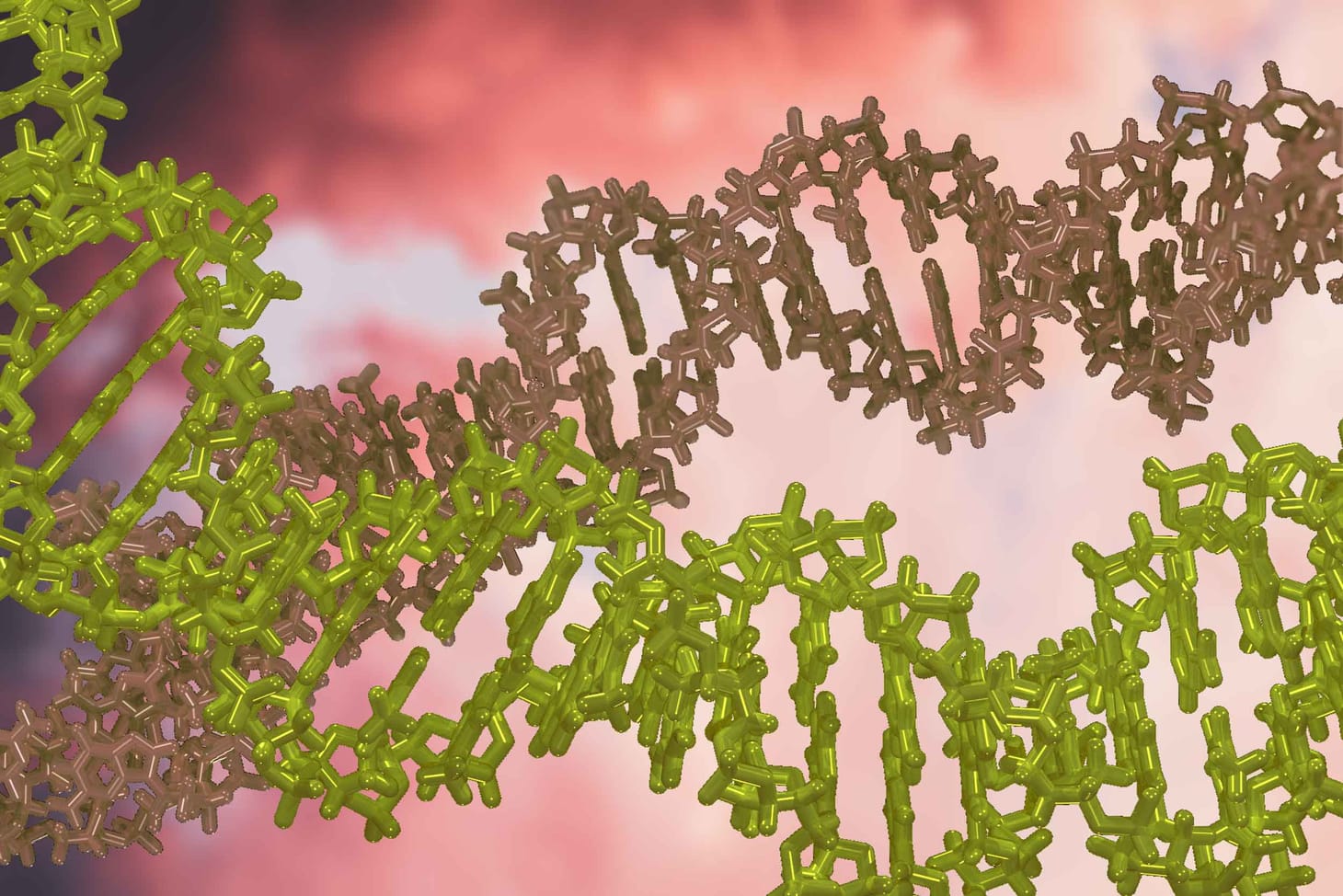A visit to the Museo Nacional de Antropología, Mexico City
I took some time out from a research symposium and presentation to take photos of a marvelous collection of anthropological heritage.

Last month I had the distinct honor of addressing the XXII Coloquio Internacional de Antropología Física Juan Comas, at the kind invitation of colleagues in Mexico. I had a wonderful time seeing the great biological anthropology work being done across the country and visiting with many amazing anthropologists.
The colloquium was held at the beautiful Museo Nacional de Antropología in Mexico City. This is truly one of the great museums of the world. First opened in 1964, its exhibition space has twelve galleries devoted to the archaeology of various regions of Mexico, including very familiar groups such as the Mexica, Maya, and Teotihuacanos, and many less well-known groups across the country. The second level has exhibits featuring the culture and ethnography of groups across Mexico.
The galleries are arranged around a central courtyard, with a roof extending from a massive central column. Water streams continuously downward from the circumference of this column, known as El Paraguas, or the Umbrella. In this photo you can really see the scale of the museum, with the two long sides open to the courtyard.
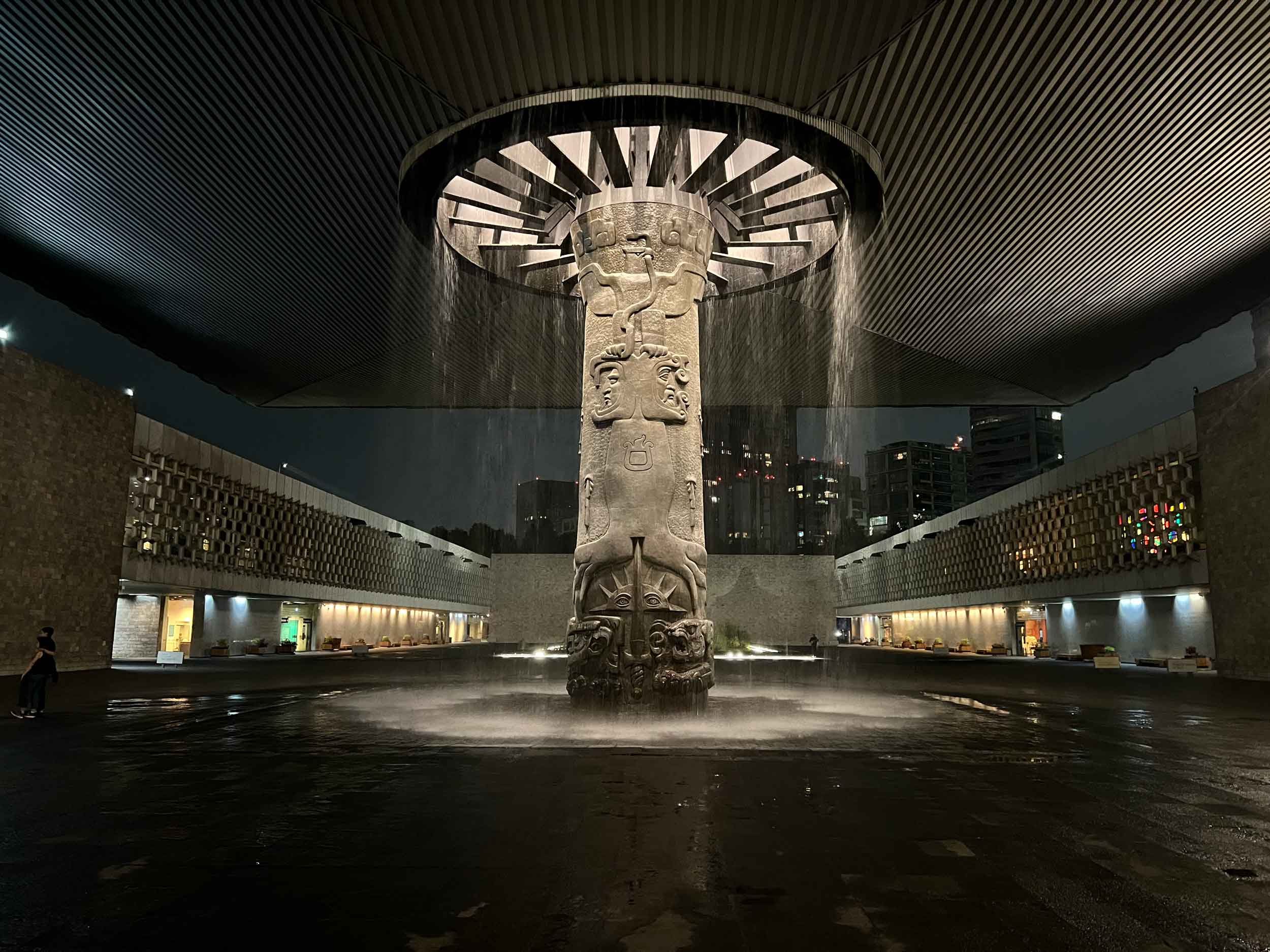
The largest of the archaeological galleries is devoted to the Mexica, the Nahuatl-speaking group from the Valley of Mexico commonly known as Aztecs. The central part of this gallery is dominated by the massive Stone of the Sun, carved from a basalt monolith in the years just before the Spanish conquest. Its iconography represents the current creation of the world, in the center, surrounded by the four previous creations and destructions. The stone has the status of a national symbol, and has pride of placement in the most prominent location in the museum.
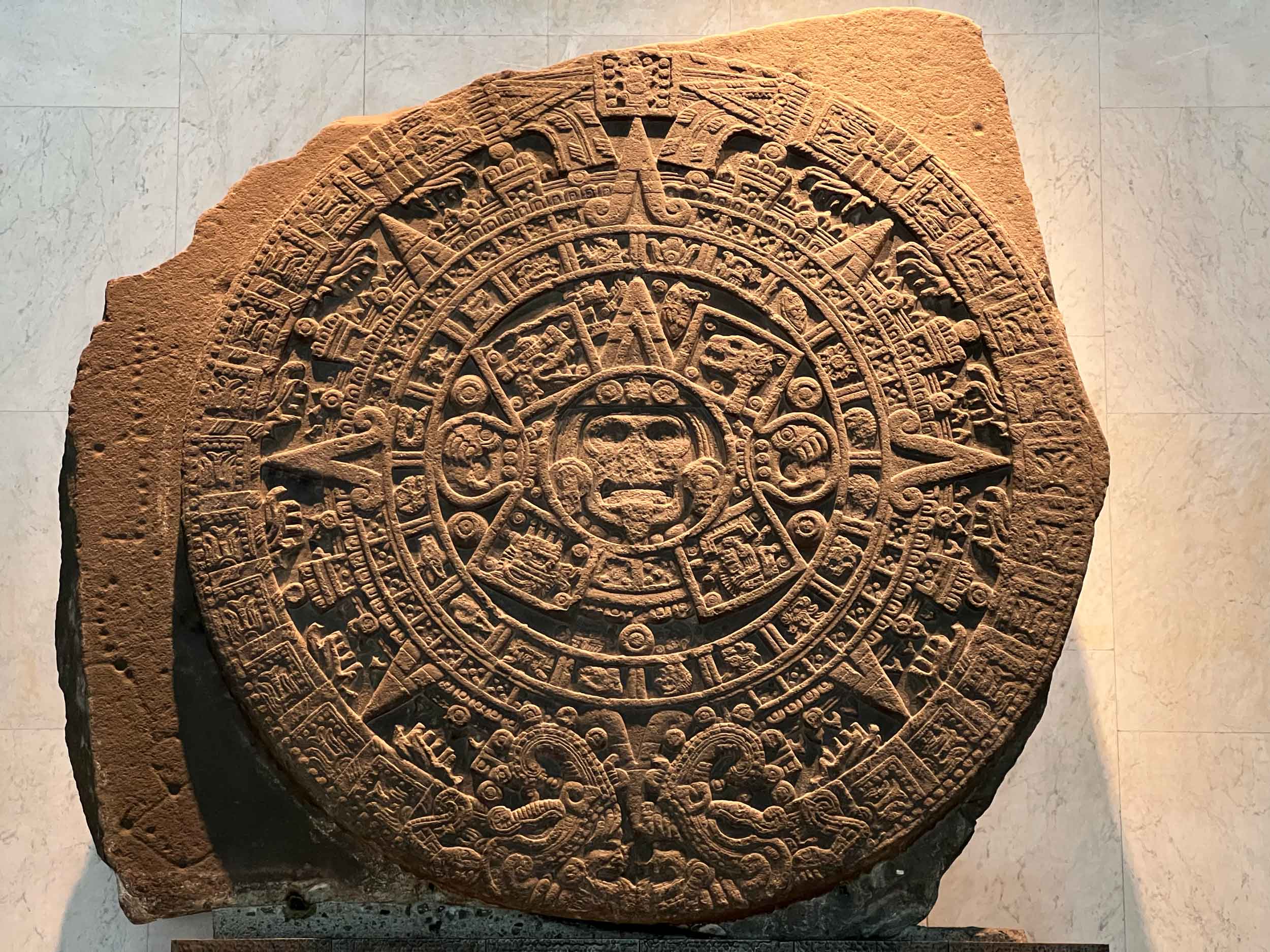
Near the stone is the massive basalt figure of Cōātlīcue, recognized as the goddess who gave rise to the moon and stars, as well as mother of Huītzilōpōchtli, the war god that was the most important motivation for human sacrifice among the Mexica. This figure is truly impressive, more than 2.5 meters tall, and Cōātlīcue takes her name from the skirt made of snakes that she wears. She is represented with a head made from two snake heads that meet in the center, with skulls, hands, and claws upon her tunic.
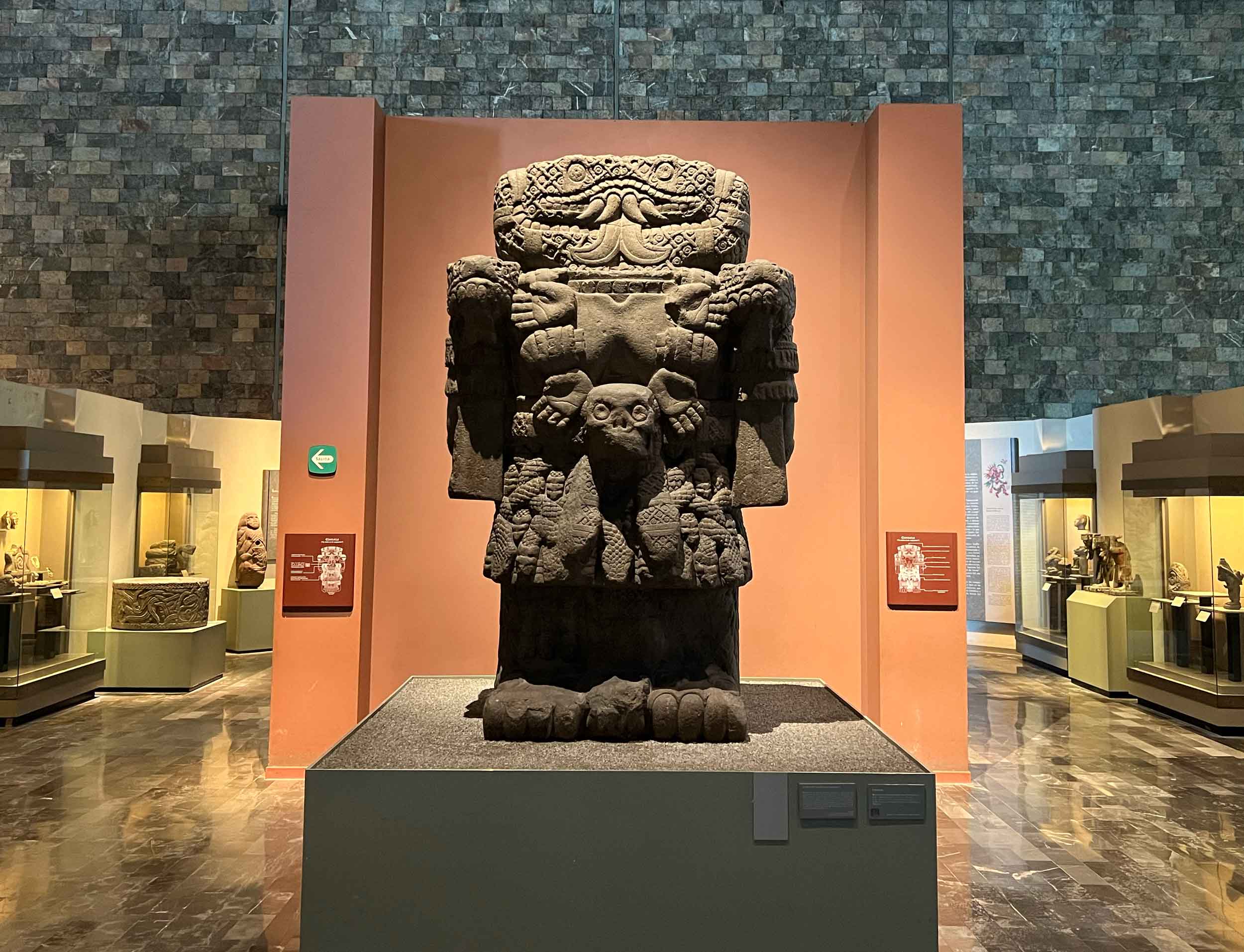
In a massive gallery with monumental sculptures, I found myself seeking out some of the smaller details. These skull figures were part of a group of five that represent the importance of human sacrifice in the Mexica cosmology.
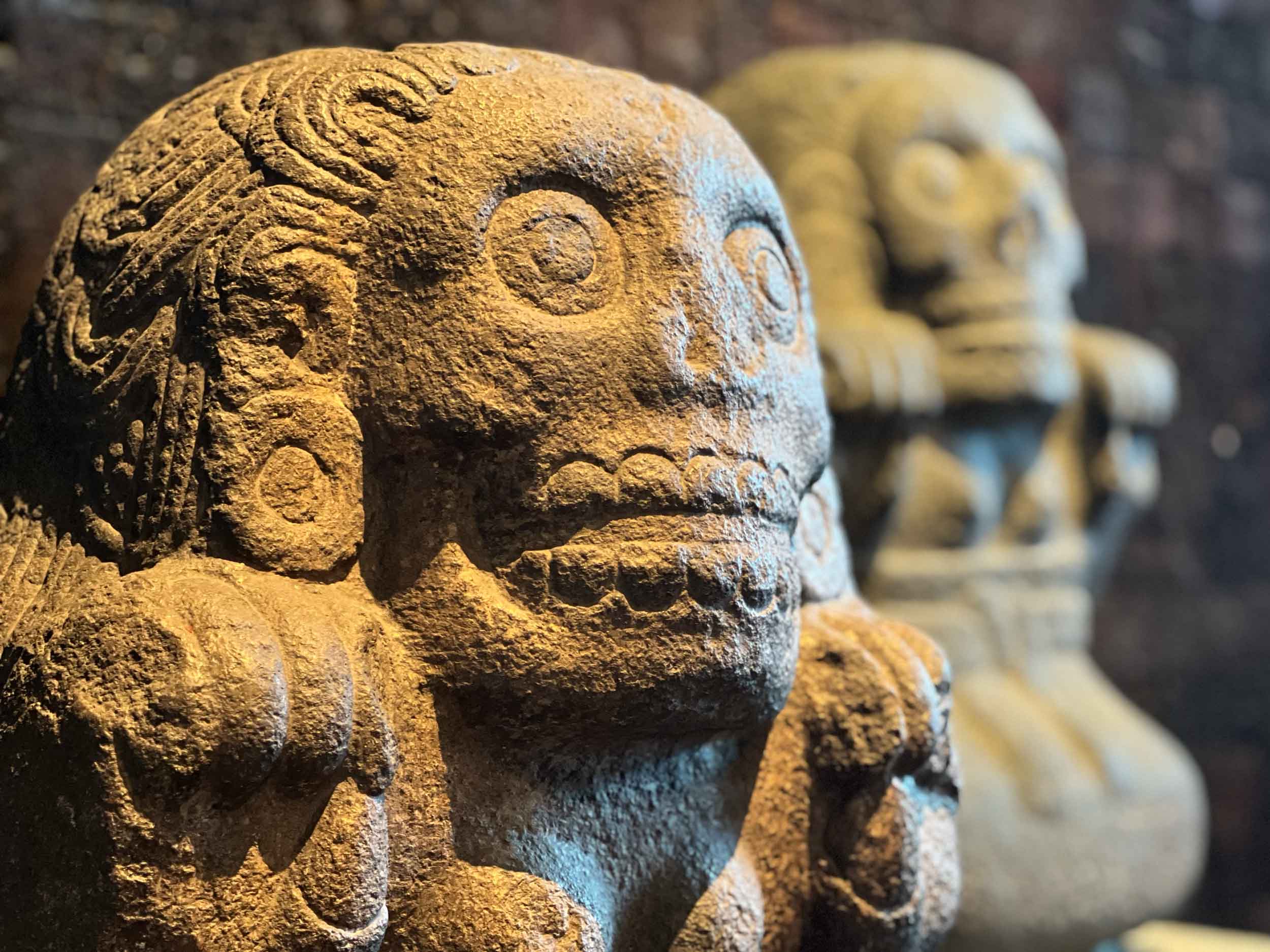
The city of Teotihuacan with its massive pyramids and broad central avenue was already more than a thousand years old when the Mexica came to the valley. The city was founded in the centuries just before the common era, and major monuments such as the Pyramids of the Sun and Moon were constructed before 350 CE. The Teotihuacan gallery is another impressive part of the museum complex.
Near the entrance of the Teotihuacan gallery is an artifact that shows the continued religious importance of this great city long after the fall of its political power. The fractured Disk of Mictlāntēcutli represents the god of death of the Mexica, placed by these people within the Pyramid of the Sun at Teotihuacan.
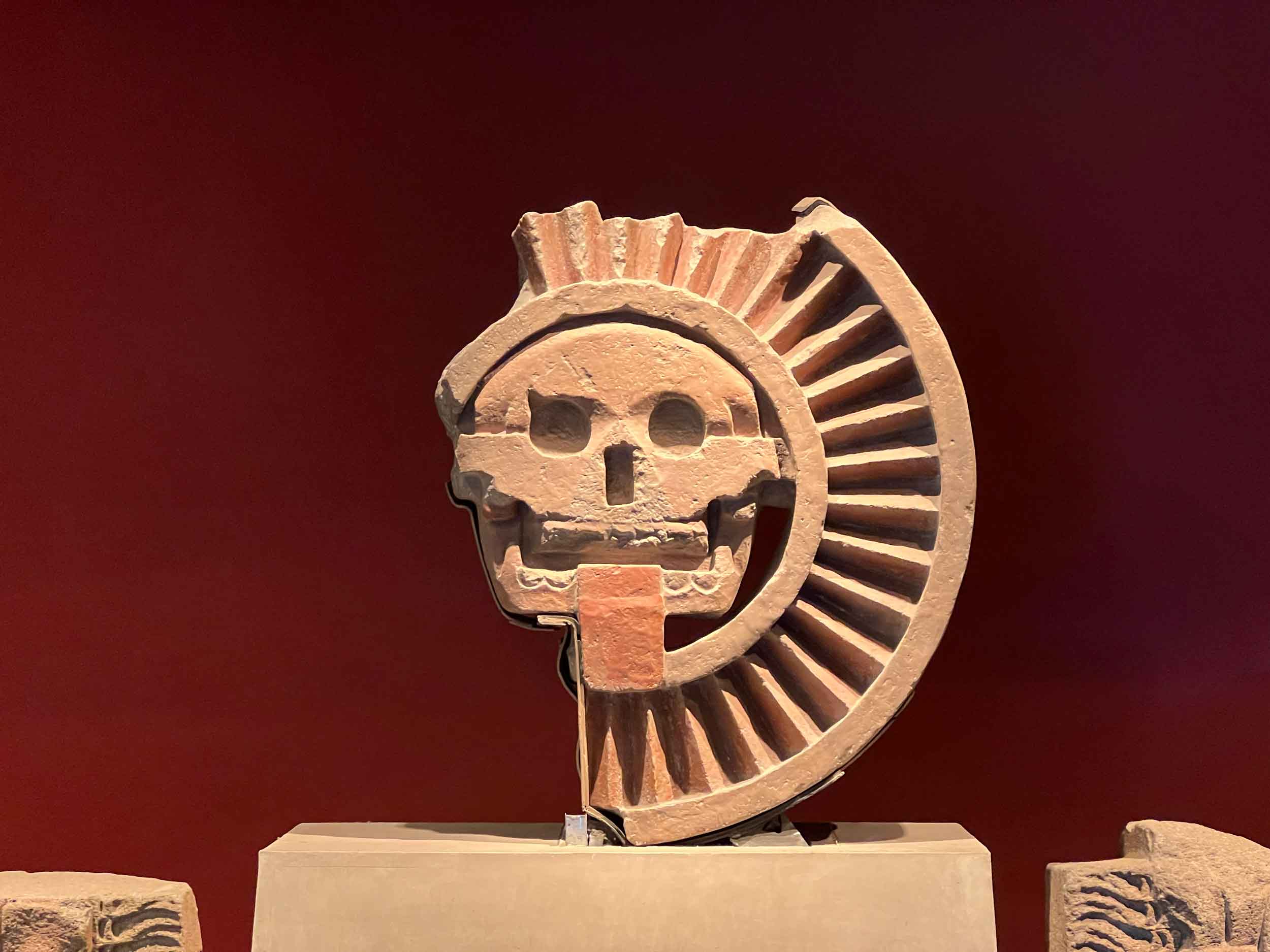
One of the fascinating elements of the museum is its incorporation of large-scale reconstructions of monuments within its architecture. The Teotihuacan gallery is dominated by a multistory reconstruction of part of the Temple of the Feathered Serpent from the city. This impressive emplacement is painted with colors that would have characterized the original monument, and serves as a facade above a tunnel where visitors can see a display of osteological remains that were uncovered in the city.
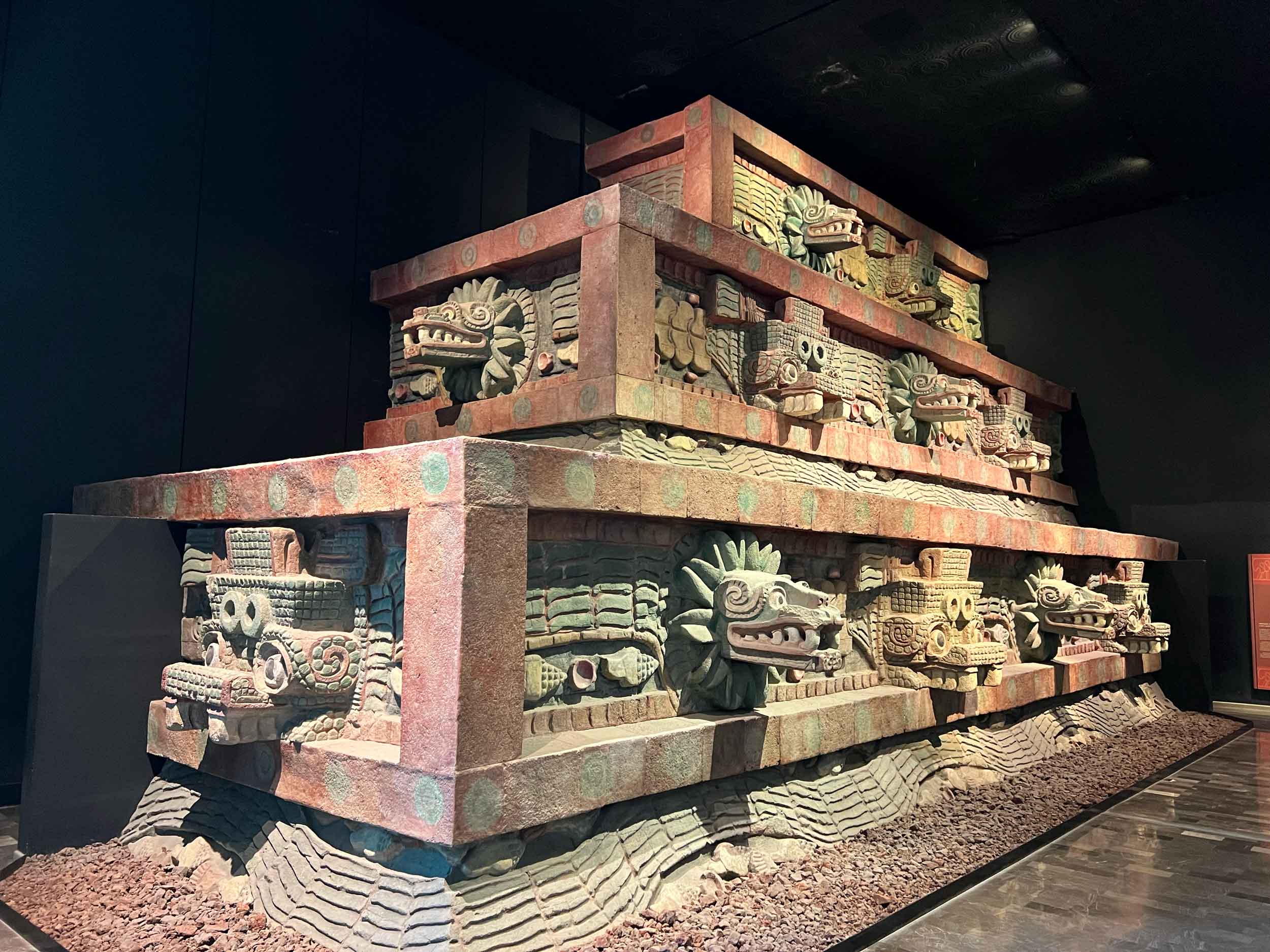
Among the massive sculptural elements and figures in the Teotihuacan gallery, I was enchanted by a window exhibit with small jointed figures, like puppets, from the city. The background behind this small figure is typical of the gallery spaces, really remarkably textured with detail.

The Teotihuacan gallery is home to a reproduction of a remarkable historical document from the Maya city of Tikal, a carved monolith known as Stele 31. The glyphs on the back of this stele describe how a warlord from Teotihuacan helped engineer the overthrow a ruler of Tikal in 378 CE. The interpretation of the text and iconography of this stele leaves open room for uncertainty about the exact events, but the representation of Teotihuacan-inspired garb is unmistakeable.

From the coastal area of eastern Mexico come some of the oldest monumental artifacts in the museum, the giant Olmec heads. This society that produced these enormous portraits flourished between 1500 BCE and 400 BCE. These people are known today by a name that was given to people who lived much, much later. Whatever name the ancients had for themselves has been lost to time. Their impressive material culture remains, with sculptures and portable art as well as the massive heads.
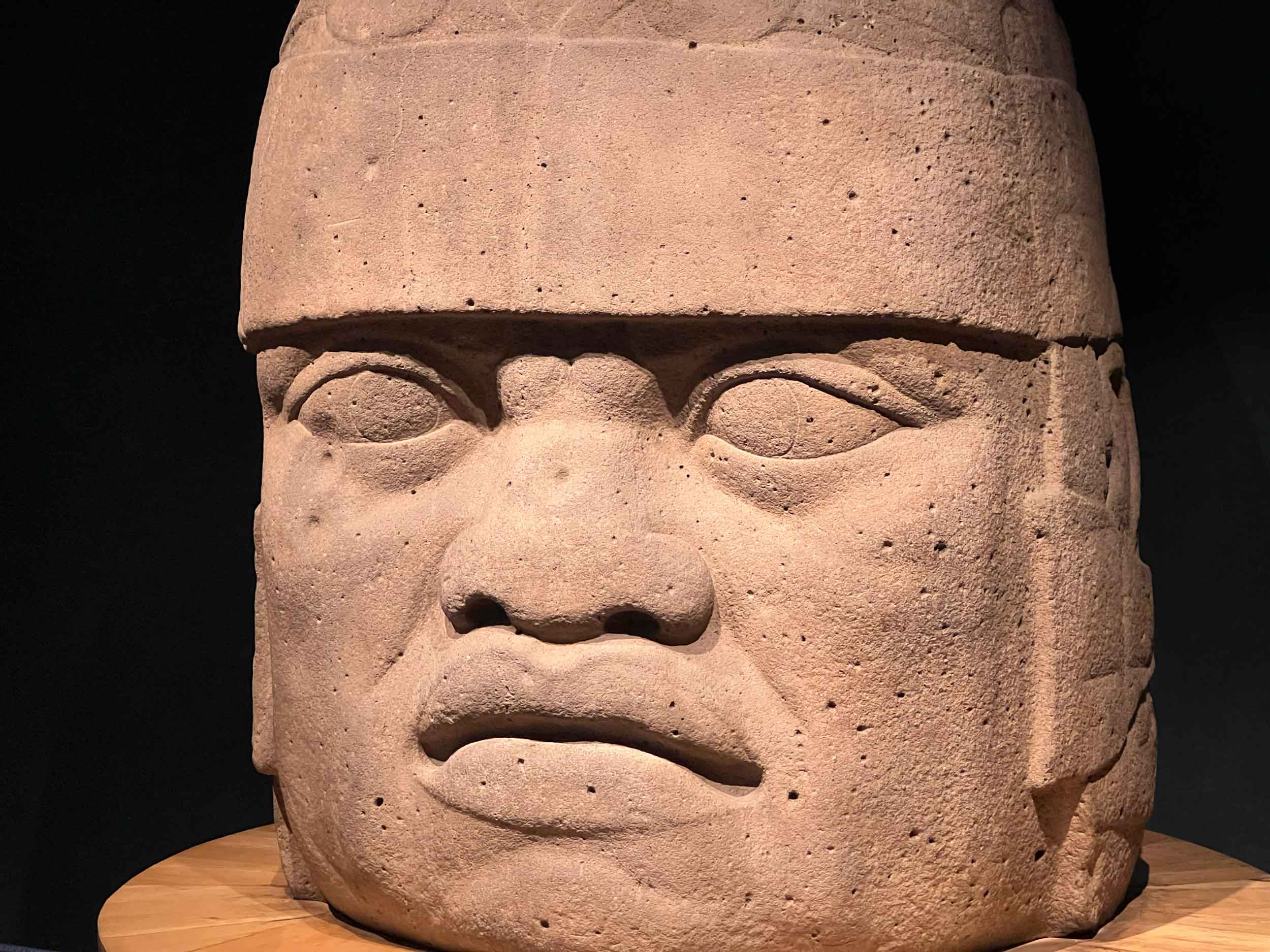
As you might imagine, the exhibition space for Maya archaeology is just as impressive as the remarkable heritage from these people deserves. As in the Teotihuacan area, this part of the museum has a massive reproduction of monumental architecture, in this case, the tomb of K'inich Janaab' Pakal, ruler of Palenque who died in 683 CE.
Within the main hall is an even more remarkable object: known as El Friso de Placeres, it is a stucco frieze that American looters removed from a temple in the state of Campeche during the 1960s. The looters brought the entire frieze to the United States where they attempted to sell the 8-meter-long piece to the Metropolitan Museum of Art. The Met worked together with the Museo Nacional de Antropología in 1969 to force the looters to repatriate the frieze to Mexico. After extensive restoration including a return to its original colors, the frieze is a centerpiece of the Maya collection at the museum. Signage in the exhibition space helps inform visitors about the vandalism that removed this object from its original context.
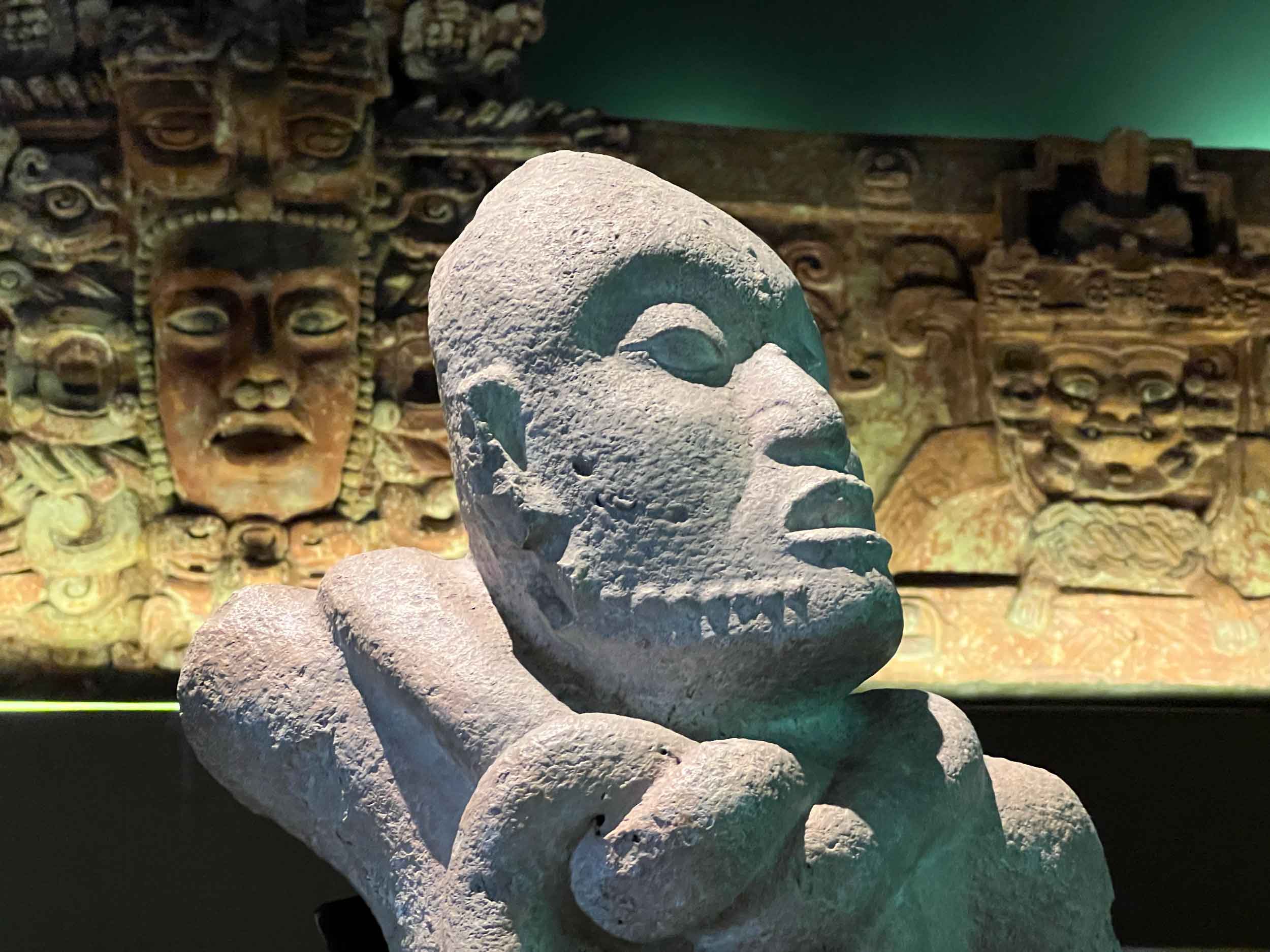
The Maya space also features some of the stelae that provide the historical record written in the Maya system of writing. These often commemorate the ascension of rulers of Maya city-states, often representing them with portraiture.
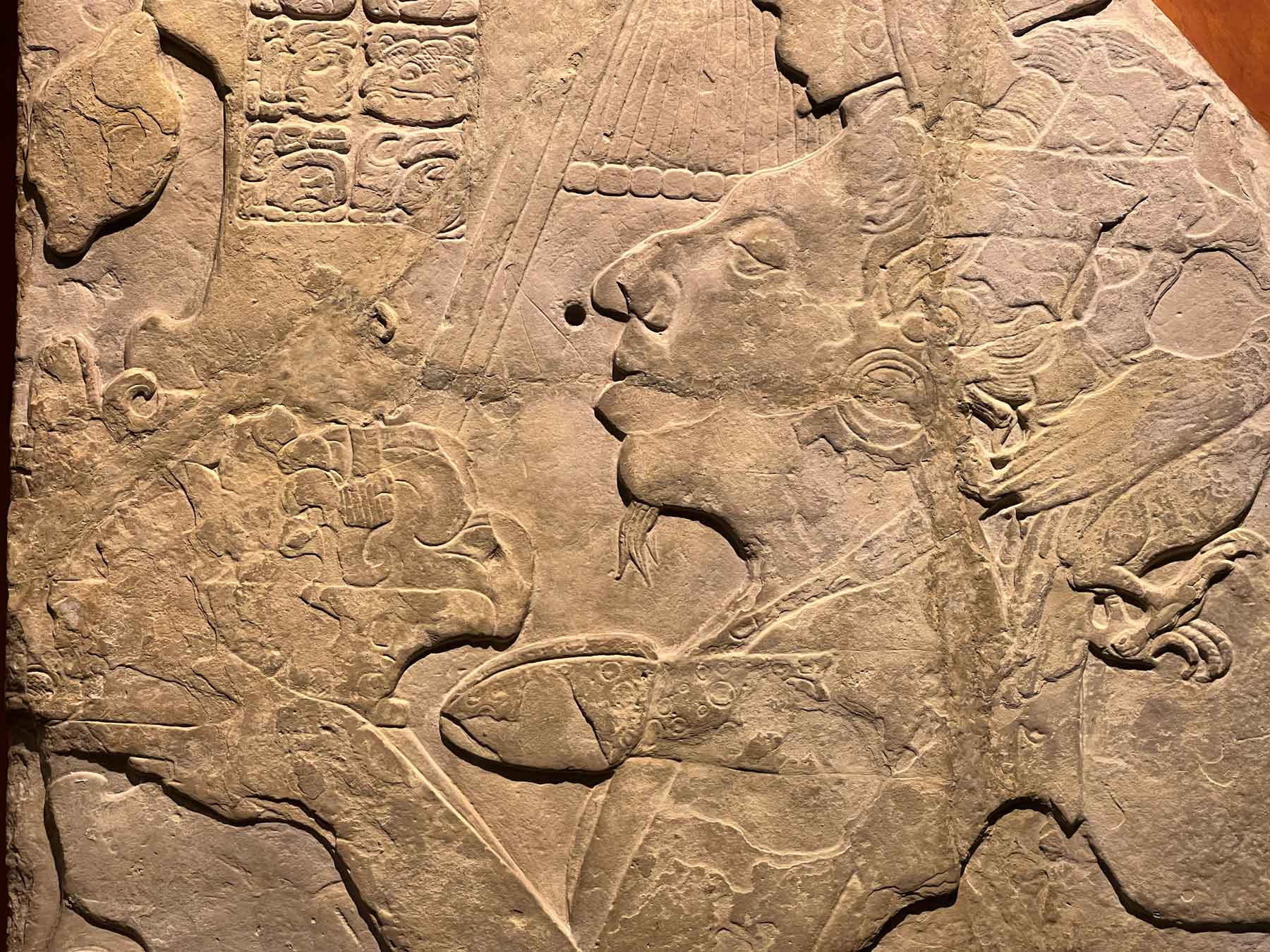
There is far too much material throughout the museum to take in during a single visit. As I circulated through the varied galleries dedicated to Mexico's regions, I started to take photos of different styles of human representation. The styles used in different cultural and historical settings vary from highly realistic sculptures of human figures to very stylized and or abstract representations. They vary greatly in scale, from tiny figurines up to vast monuments. And they vary in materials, from pieces sculpted in stucco or clay to those carved from stone, bone, and wood.
This Maya stucco portrait struck me as similar to nineteenth-century death masks.
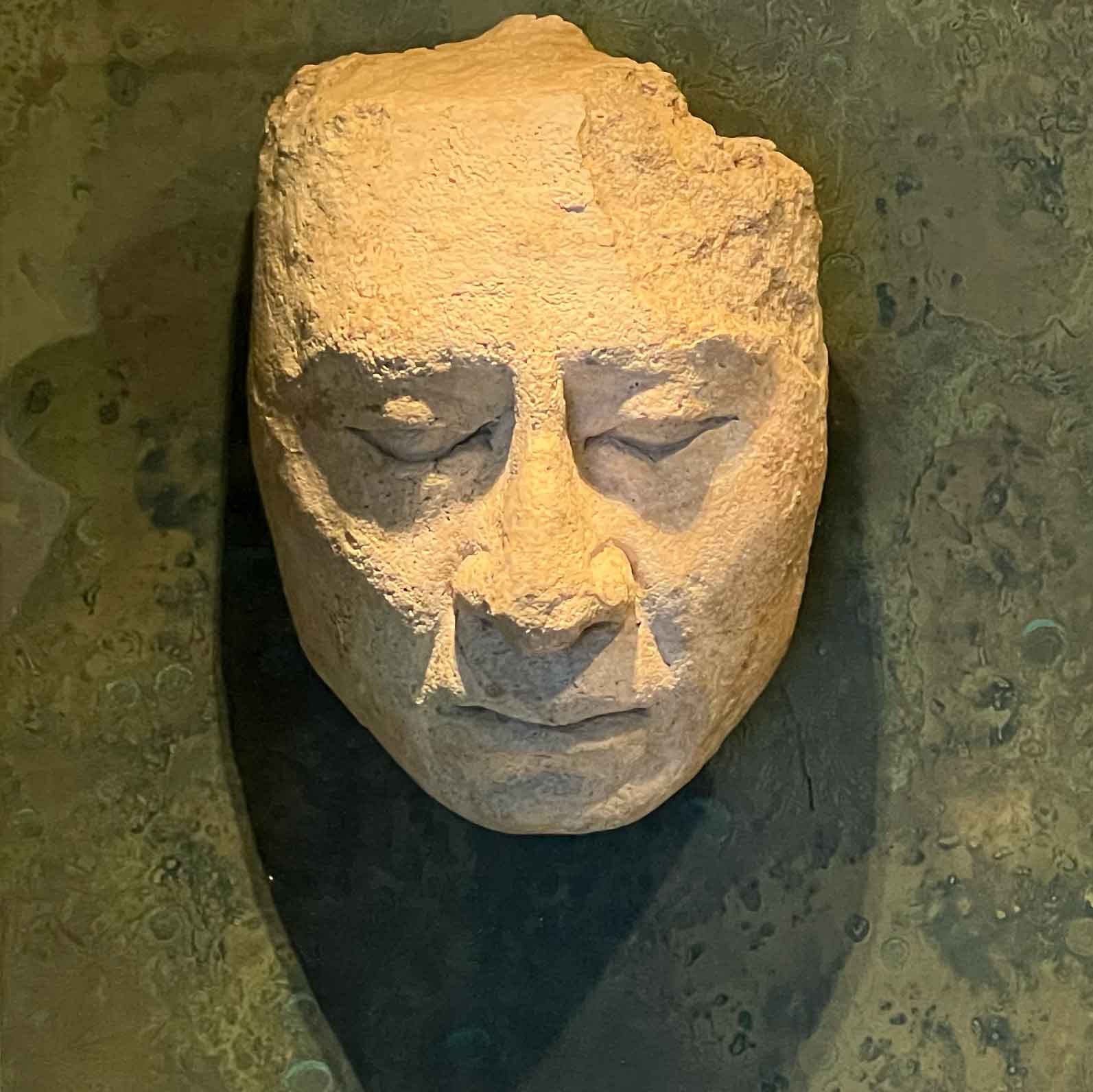
I loved these small figures from Jalisco, that the museum curators had staged together in a little group. They seem to be lost in thought.

Two smiling faces from the Gulf Coast region bring out the emotional richness in many of the representations and portraits.
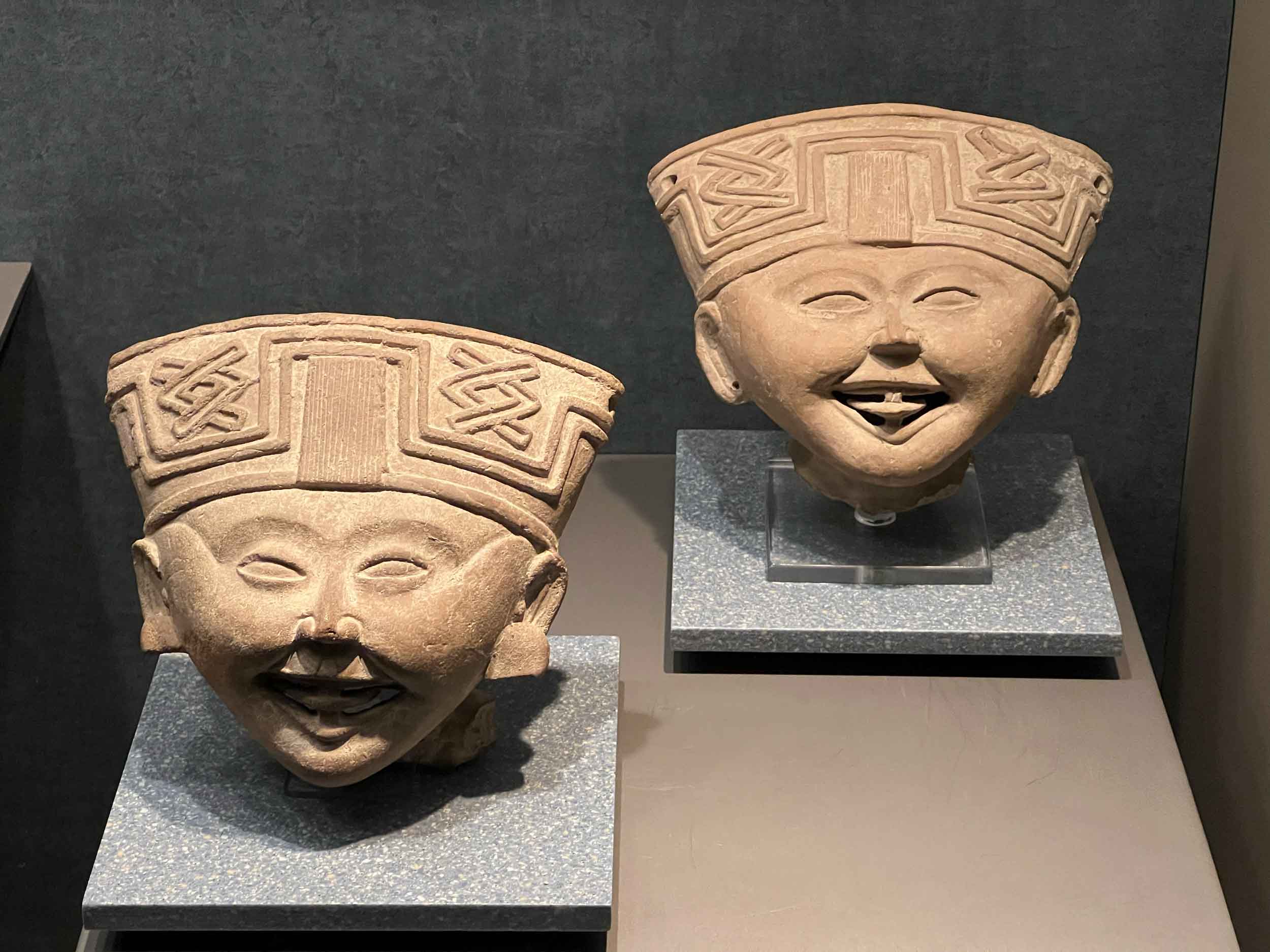
A pair of figures yearning upward from the southern coast of Mexico reminded me of the sculpted faces from the Neolithic of Lepensky Vir, Serbia.
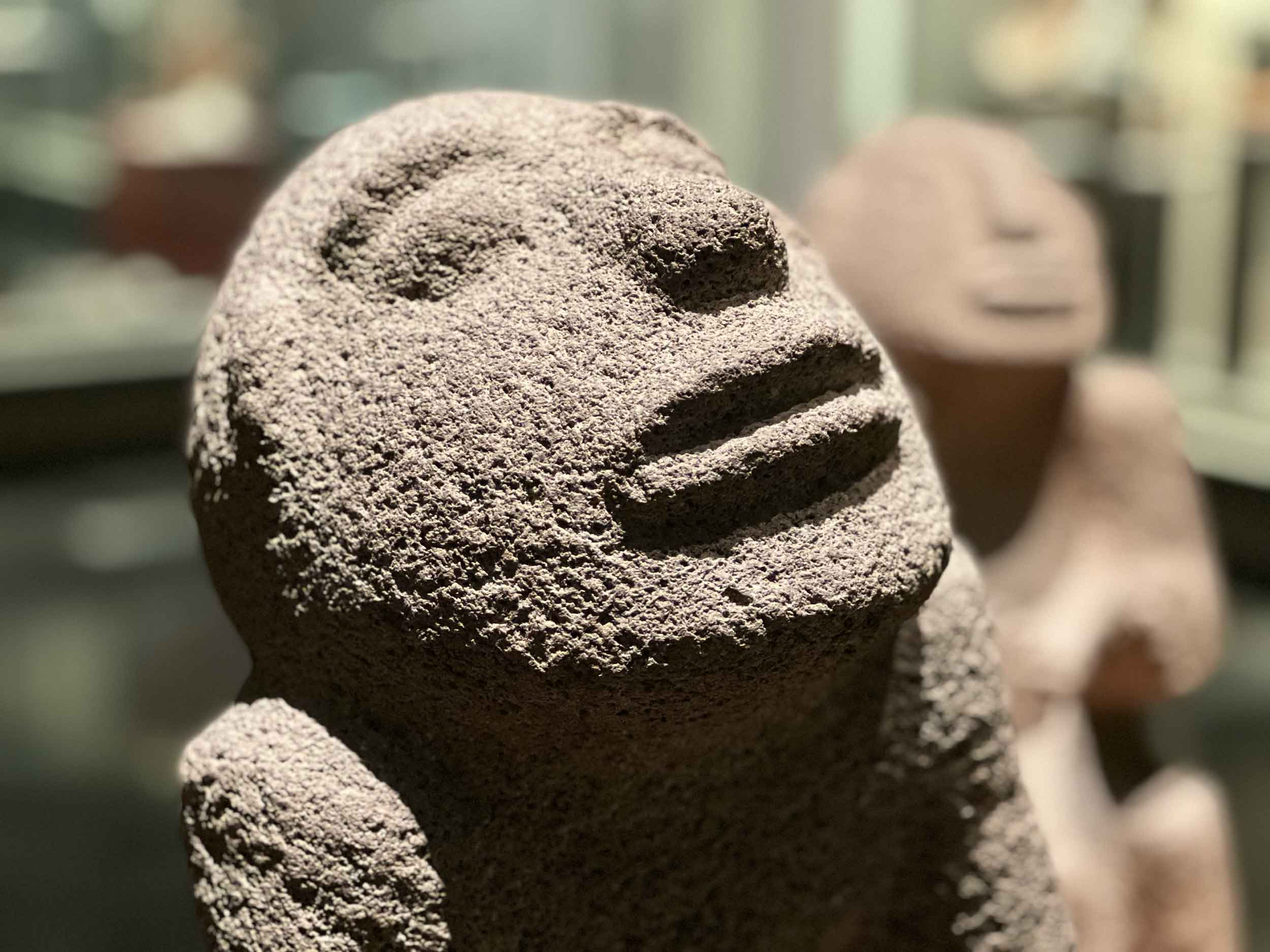
As a specialist in human evolution, I was especially interested to visit the section of the museum that relates the deeper ancestry of humans around the world. It's an anthropology museum, after all, and both the arrival of humans in the Americas and the ancestral relationships of all humans are big parts of the story. I wasn't disappointed, the exhibit has some very fine contextualization of the fossil record of human origins as well as the early archaeology of the Americas.
At the opening of the museum in 1964, the government commissioned the artist Jorge González Camarena to create a mural representing the biological and cultural diversity of humanity. The resulting work, “Las razas y la cultura”, is a glowing representation of the varied biological heritage of our species, represented by women's faces, hands, and figures from all parts of the world. Many of the women wear traditional headdresses or other garb, and the group is surrounded by artifacts and pieces from historic human cultures. My favorite detail is the column at right of the scene made up of skulls from earlier species of human relatives, intertwined with a living vine.
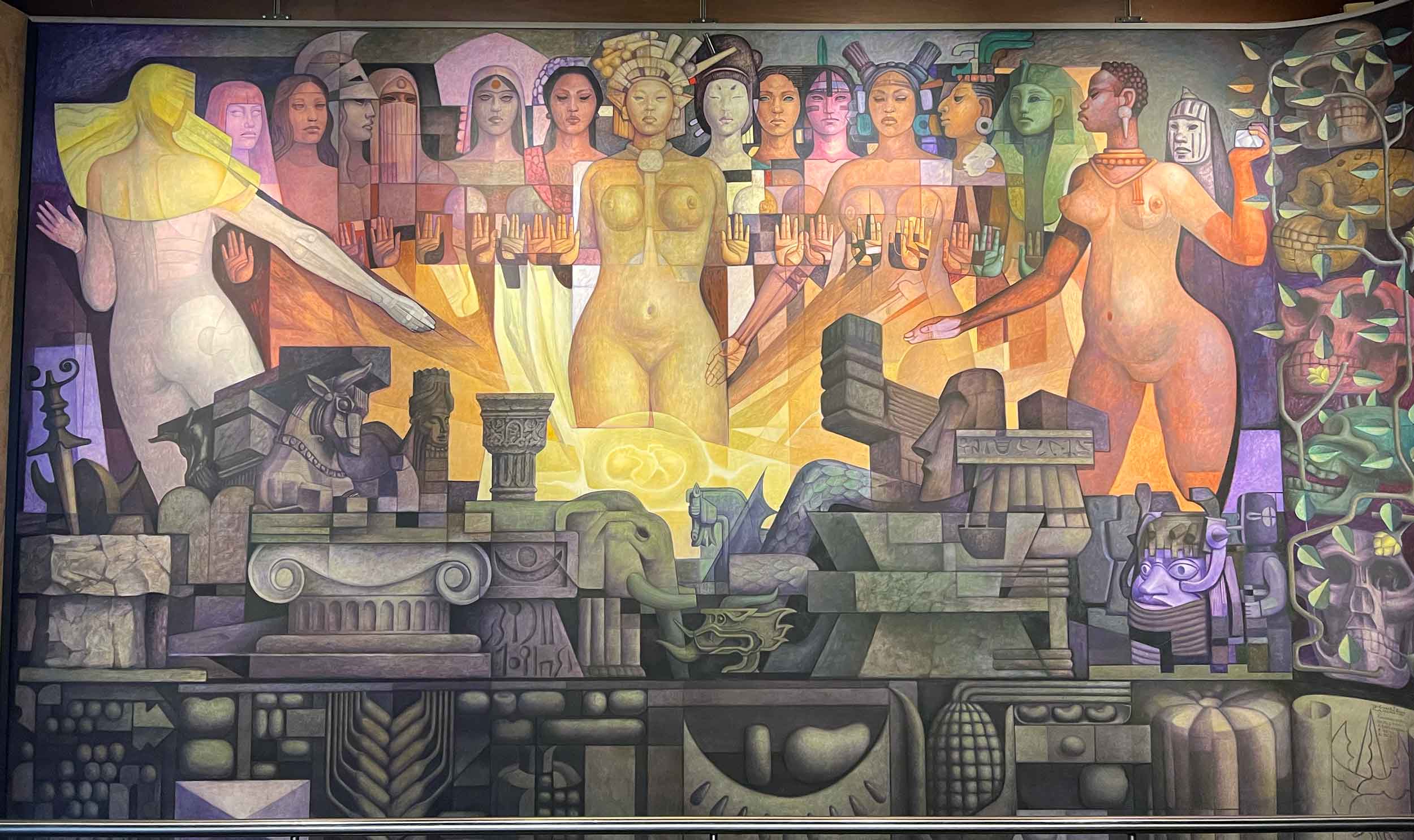
The exhibit has the usual array of casts of hominin fossils, with a modern understanding of their phylogenetic arrangement. What I thought was most extraordinary was the classic artist's reconstructions of many of the fossil individuals, rendered from carved logs of wood. For example, the “Lucy” individual is portrayed as a mother breastfeeding her infant.
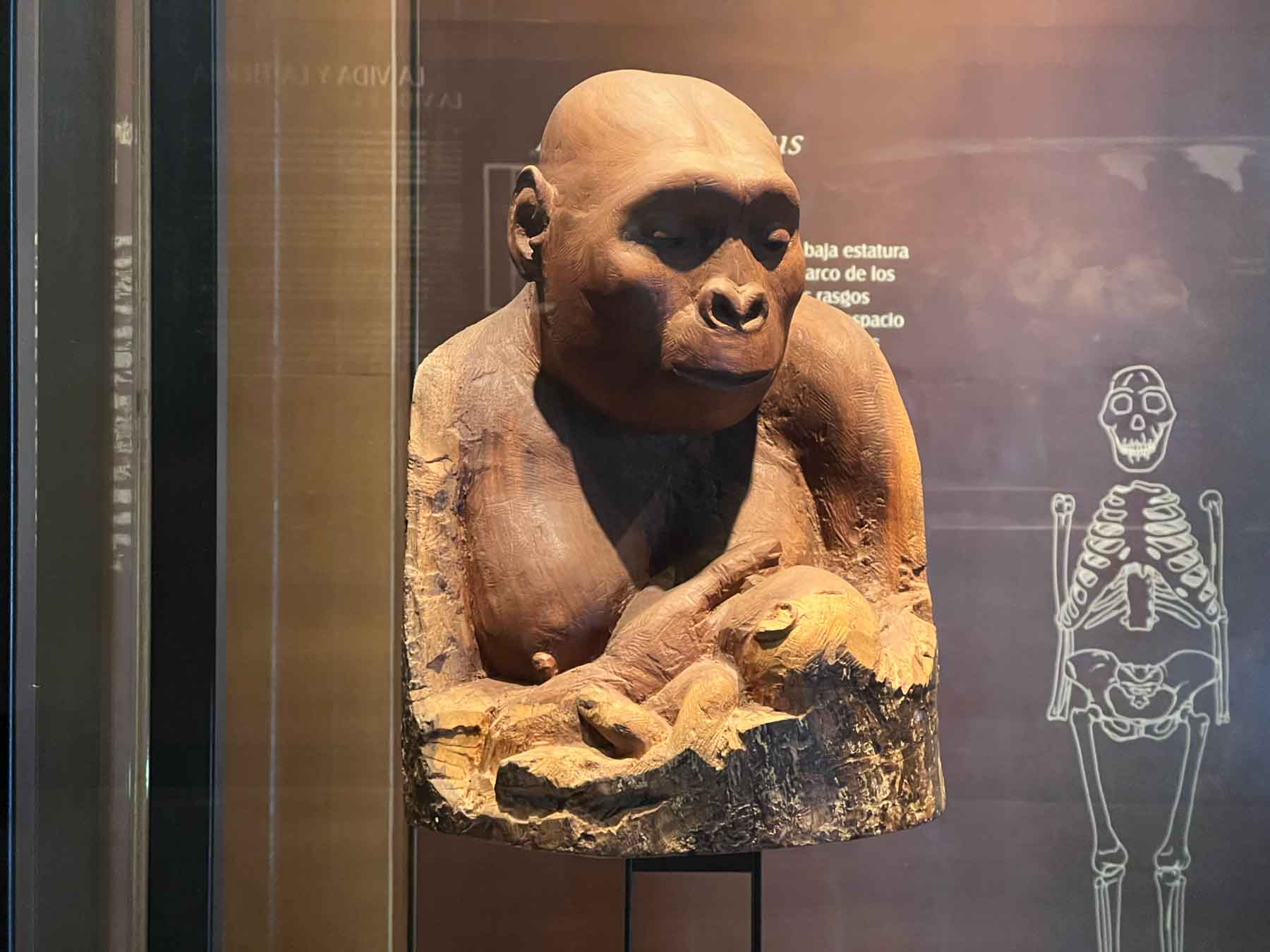
The institution is not only an exhibit museum but also a working research museum, with a lower level dedicated to research space, storage, and staff. I had the opportunity to visit these facilities and see some small parts of the collections, and came away incredibly impressed by the remarkable heritage and the professional museum staff who carry out research and conservation of the material.
John Hawks Newsletter
Join the newsletter to receive the latest updates in your inbox.

